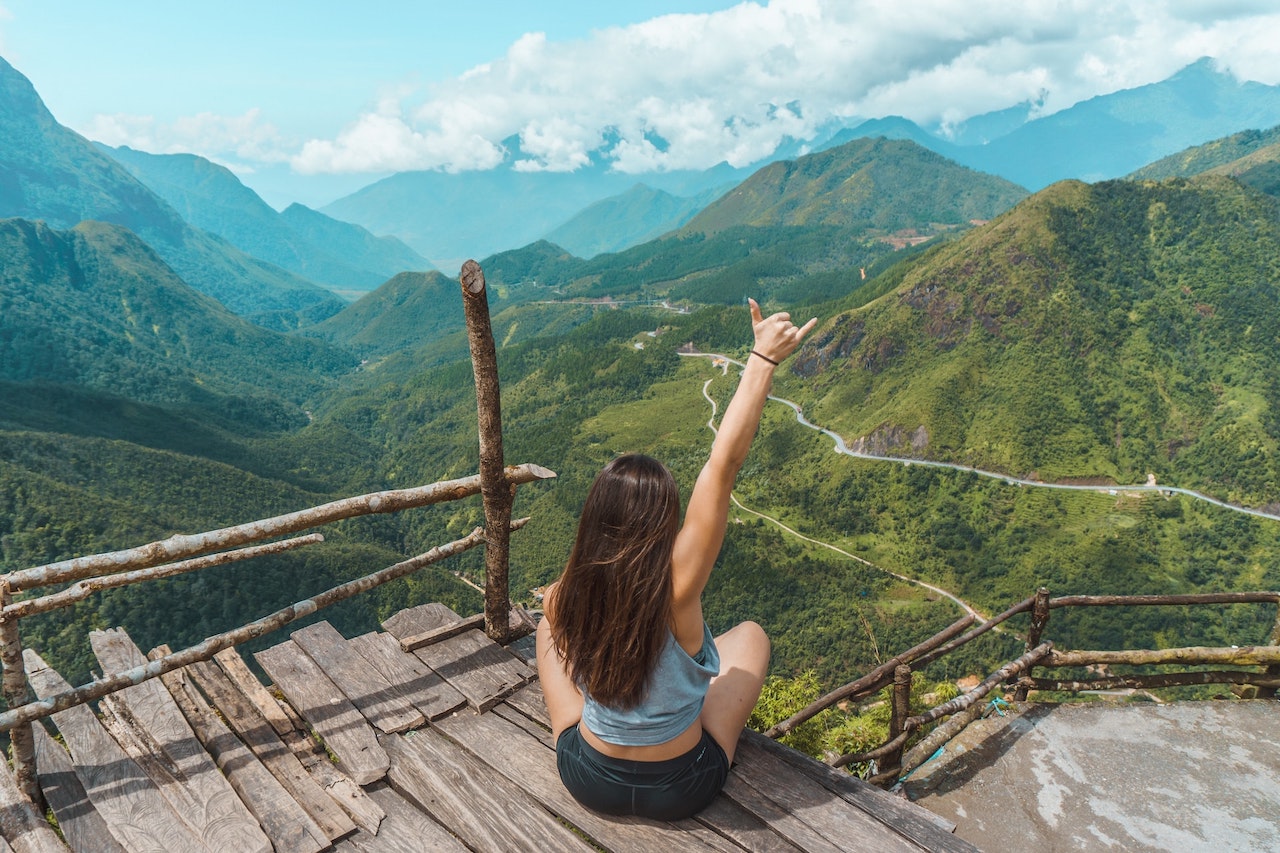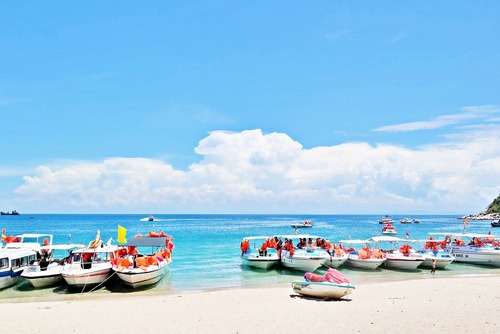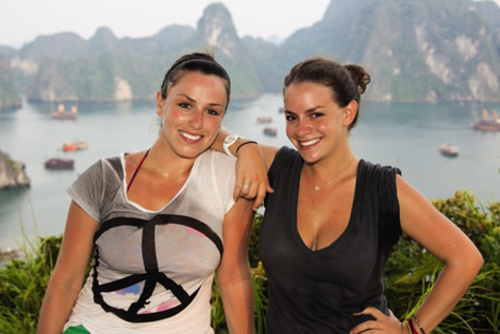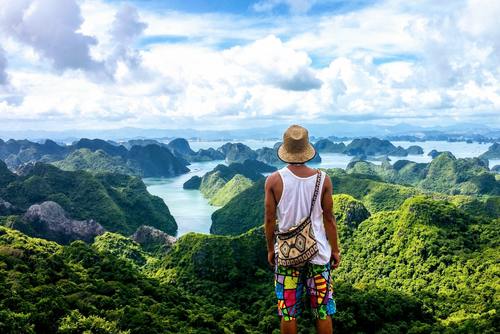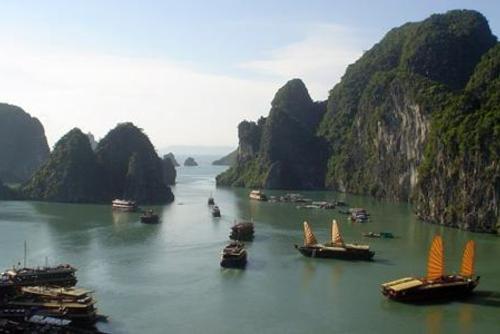Vietnam is less developed than Thailand and perhaps less visited, the country is both chaotic and tranquil in equal measure. The cities are crowded, busy and exciting, whilst the smaller towns and countryside are more relaxed and picturesque.
It would honestly be impossible to condense the whole trip into one post, so here I have attempted to cover the highlights and key attractions in each places I visited which will hopefully give you some itinerary ideas for spending 2 weeks in Vietnam traveling South to North.
You can travel independently by bus, train or plane or search Vietnam tours which travel different routes taking in the highlights of the country.
1. Start: Ho Chi Minh City (Saigon)
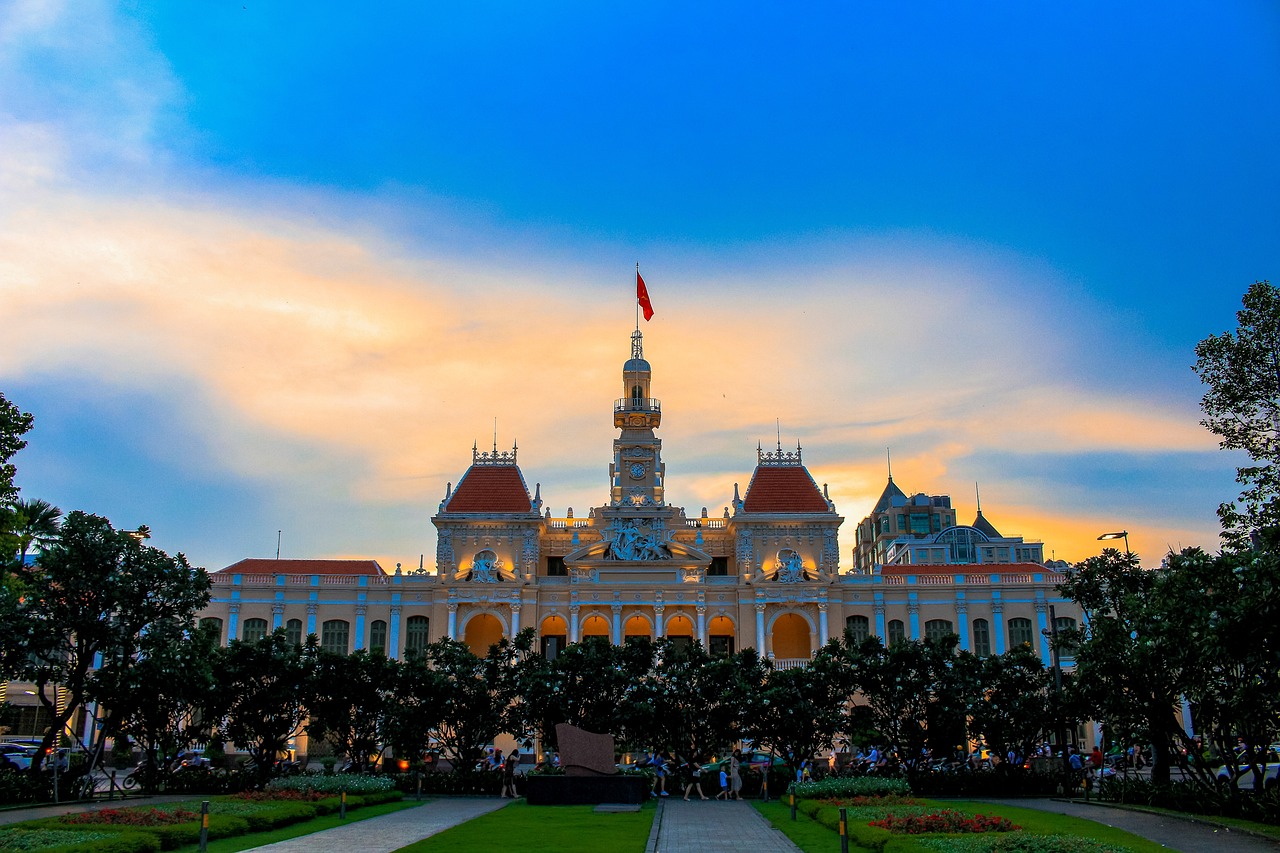
Arriving in Saigon can be a little overwhelming.
The heat, noise, and traffic combine to make the city seem chaotic and unfamiliar, however once you are used to the thousands of mopeds, packed roads and persistent street sellers there is a lot to see and do here.
Some of the main attractions to visit include:
- War Remnants Museum – once called the American War Crimes museum, it contains a pretty biased view of the conflict in Vietnam but an interesting visit none the less.
- Ben Thanh Market – Saigon’s main market housing thousands of stalls selling virtually everything. It is undercover and can get very hot, but an outdoor version is held at night.
- Notre Dame Cathedral/General Post Office – built by the French to replicate the original in Paris, it is worth visiting for the architecture.
- Saigon Sky Tower – the 52nd floor of the city’s tallest building houses a modern bar with great views.
Ho Chi Minh City is a popular destination for tourists and also foreigners seeking to teach English in Vietnam as lots of language schools are located here. If you want to doing rewarding volunteer work in Vietnam there are lots of community based projects in the city too.
2. Nha Trang
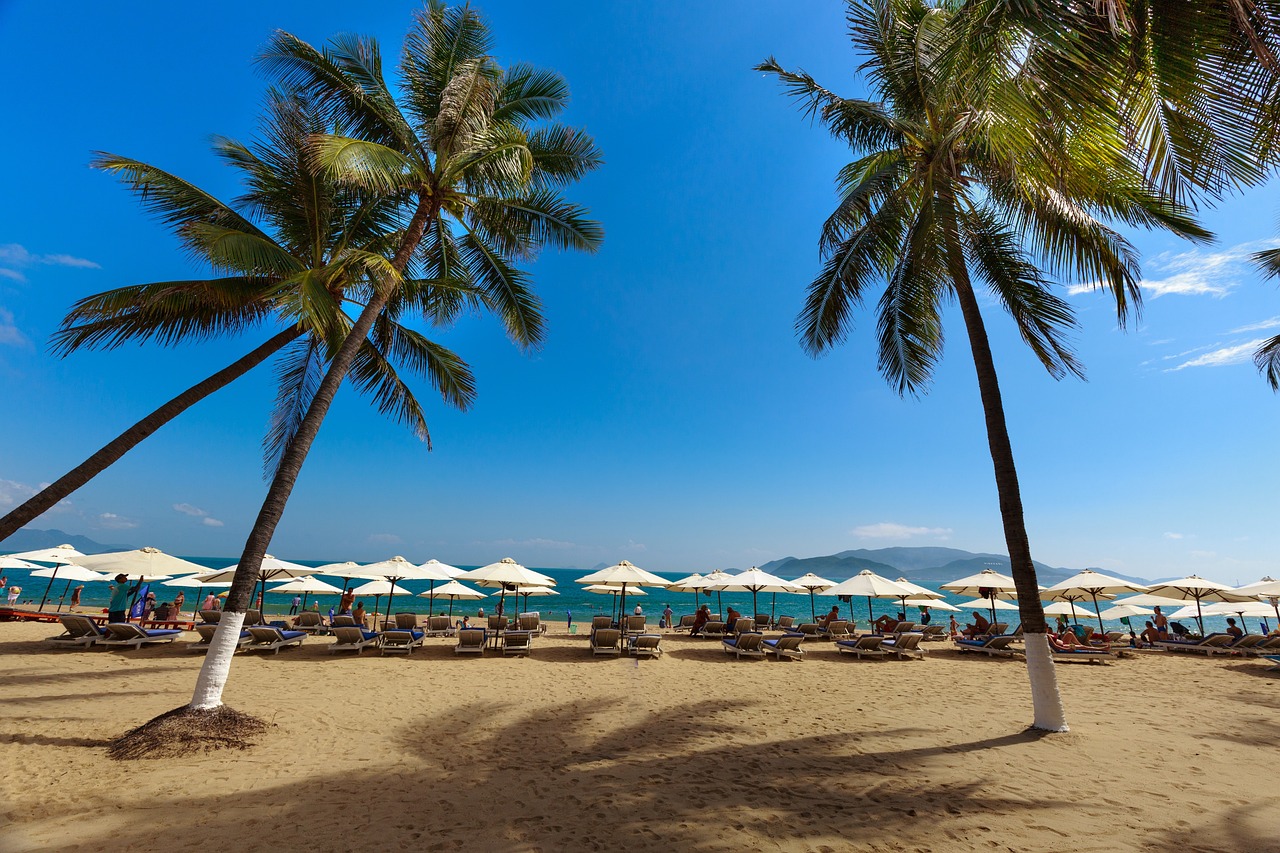
Vietnam’s main beach destination, the town is seeing the increase in high rise hotels, shops and restaurants, and the beach is amazing. I found it similar to Chaweng Beach on Koh Samui Island in Thailand.
- Mud baths – these are known for their rejuvenating skin properties. Whether this is true or not, it’s a laugh getting covered in mud and sitting in the hot pools afterwards.
- Long Son Pagoda – Ancient temples and great views, and entrance costs around 40p.
- White Buddha statue – A huge white Buddha dominates the skyline of this religious site.
- Beach - Relax, swim, snorkel or learn to scuba dive in Vietnam here.
3. Hoi An
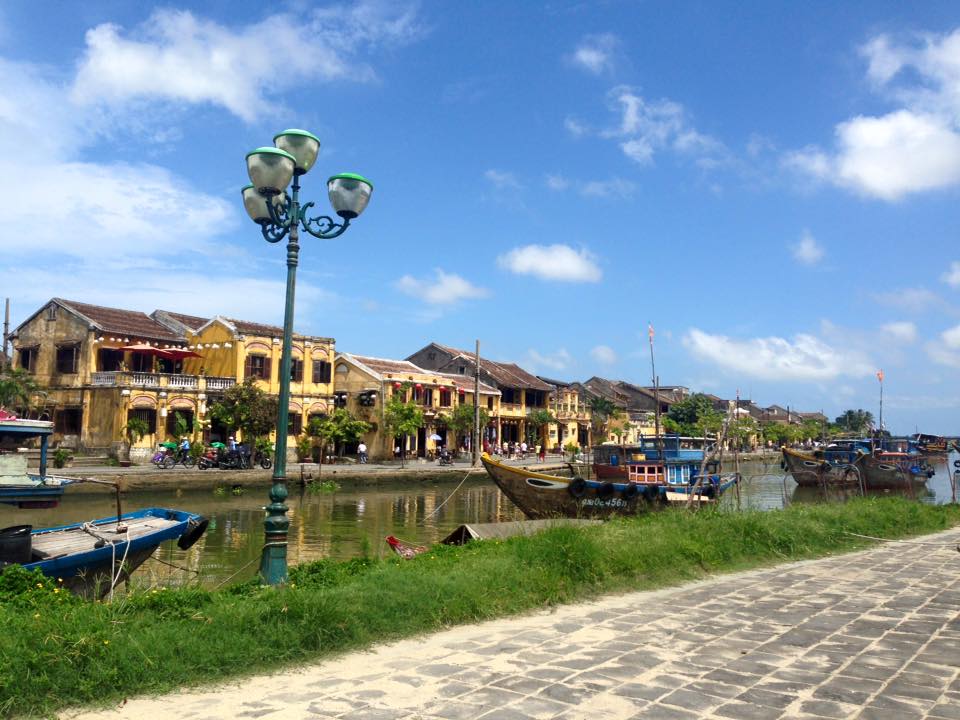
The picturesque UNESCO listed town of Hoi An was a particular highlight of my trip.
You need to visit Hoi An, this city is known for its tailoring and clothes can be personally made for you within 24 hours. The riverside comes alive at night, with restaurants and bars lit by lanterns, and candles float on the water.
- Cooking classes – Hoi An is known for its unique cuisine, and we were lucky to attend a class taught by Madame Vy, Vietnam’s ‘celebrity’ chef.
- Cargo – this restaurant is owned by Madame Vy, and is renowned for its French patisserie.
- Cycling – bikes are available to explore the surrounding paddy fields and countryside. We went out in a monsoon so I was unable to get any photos!
4. Hue
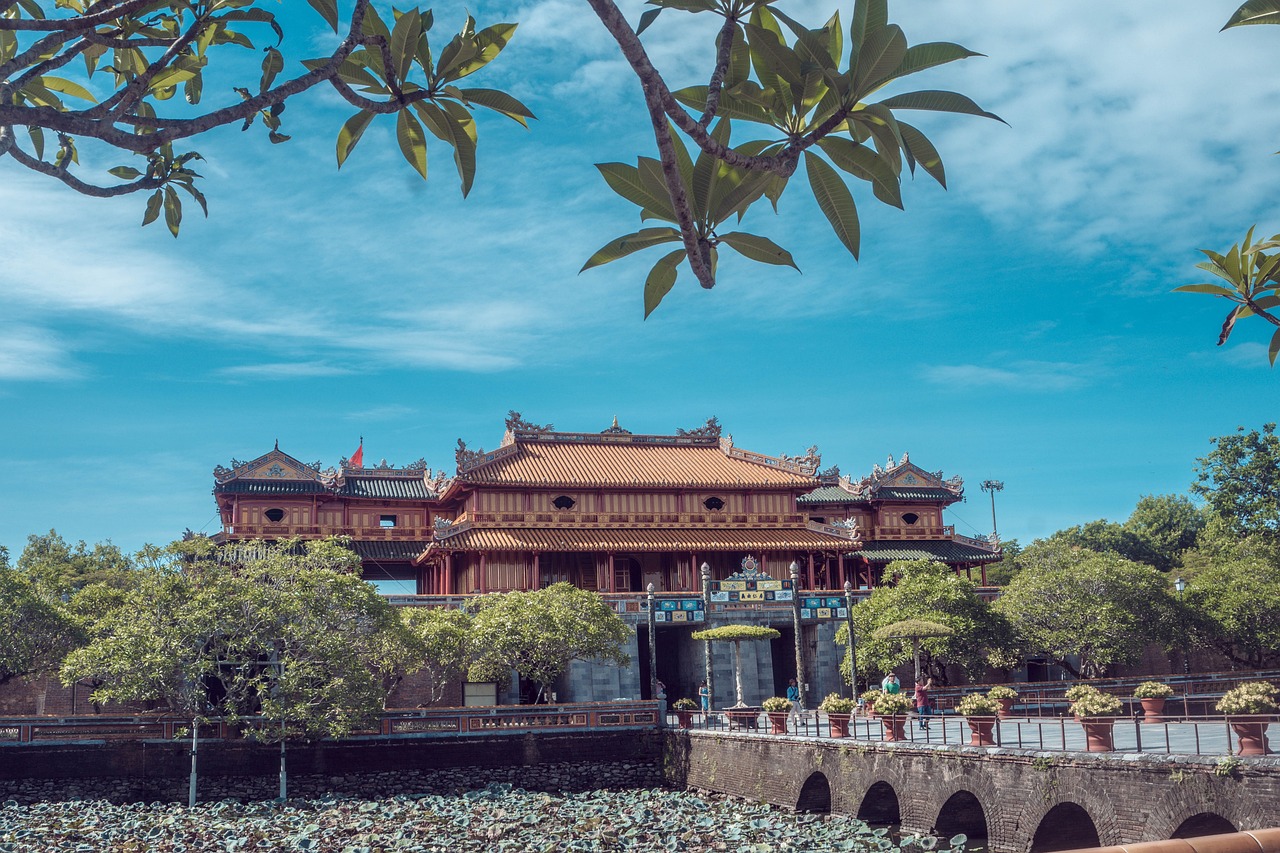
Hue is known for its role in the Vietnam War as the place of the Tet offensive; bullet holes are still visible in the walls of the old citadel. Listed by UNESCO as a world heritage site, the old Imperial City contains an exact replica of the Forbidden City in Beijing.
- Moped tour – a highlight of the trip, drivers took us on a tour around the less visited areas of the city. It included a museum documenting Vietnam’s agricultural history, a Buddhist temple and a traditional hat maker.
- Citadel – we didn’t have time to look around fully, but it contains Chinese inspired architecture and gardens.
5. Halong Bay
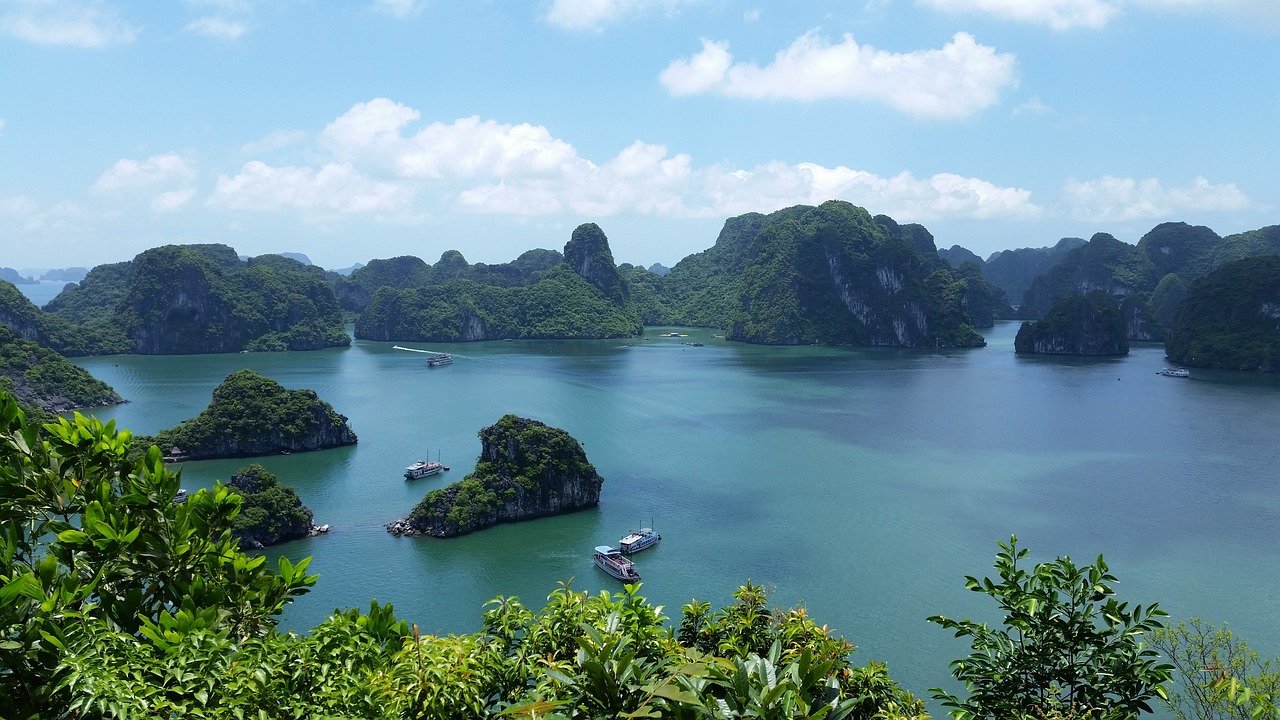
Another site listed by UNESCO, Halong Bay is one of the world’s great natural beauties and one of the places you need to visit in Vietnam.
1,969 limestone karsts are scattered across the bay, sustaining fishing villages whose inhabitants rarely set foot on land. Kayaking around the karsts was a brilliant (and surreal!) experience, and the naturally formed caves are also impressive.
6. Finish: Hanoi
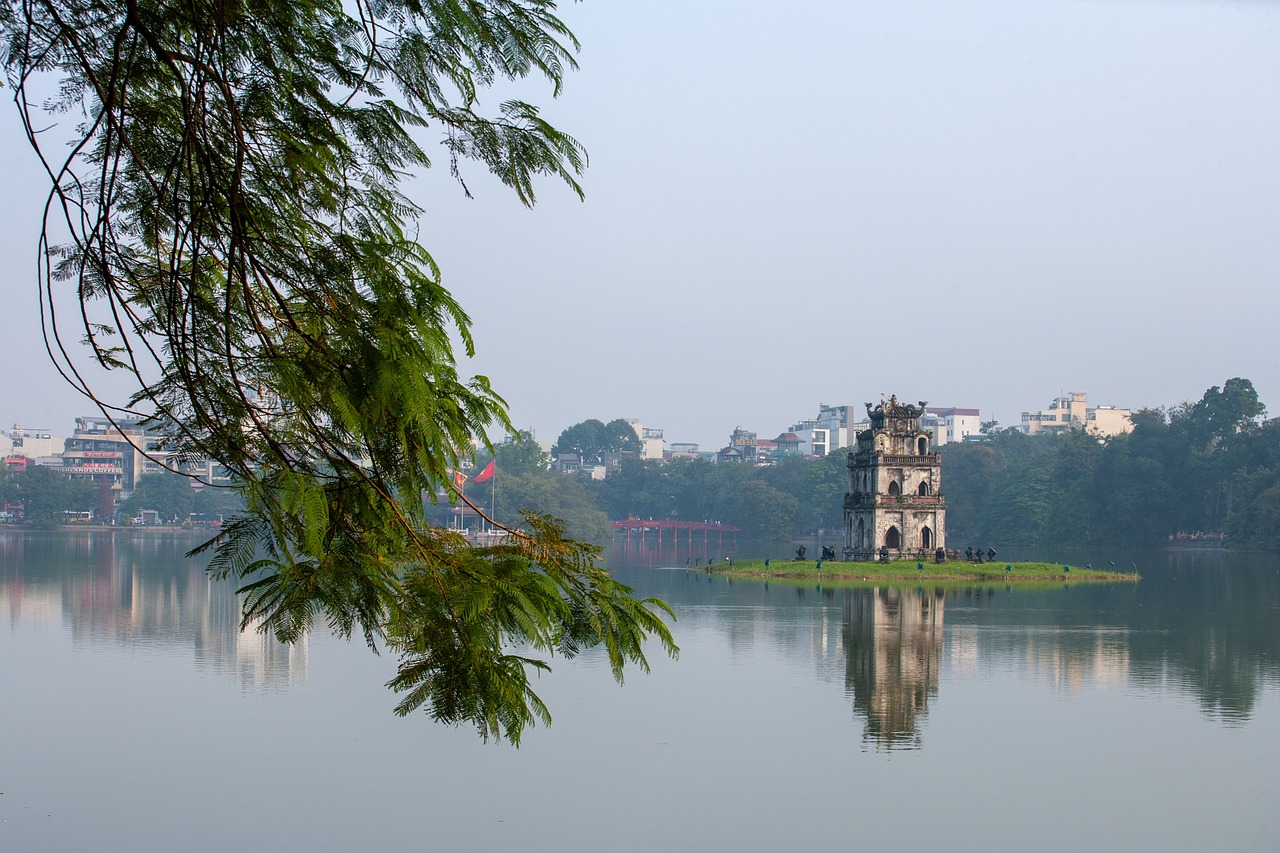
More traditional than Saigon, the old town is full of shops spilling out onto the pavement and narrow streets filled with mopeds.
Although it is the capital, many businesses find trade easier from Saigon due to communist restrictions, so Hanoi has seen less development than the southern city.
Highlights of Hanoi include:
- Water puppet show – a traditional Vietnamese art, the water puppet show has to be seen to be believed. Quite honestly it’s bizarre and difficult to describe! The theatre runs multiple performances a day and costs around £2.
- Mausoleum of Ho Chi Minh – he died in 1969, but his body has been preserved in a glass case for people to pay their respects. Guarded 24/7, visitors only spend about 15 seconds in the mausoleum, but to be honest that’s enough as the whole thing is a bit creepy.
- Egg coffee – one of Vietnam’s specialities, we tried this in an out of the way, local coffee shop in Hanoi. It sounds weird but it one of the tastiest foods in Hanoi!
- Culture - There are lots of museums in Hanoi worth checking out.
If you have a day or two free, I would recommend doing a trip from Hanoi to Sapa.
Plan Your Vietnam Itinerary
This itinerary can be adapted for shorter or longer durations, althought anything less than 14 days will be rushed and if you have more time you'll get to see more places and travel at a relaxed pace.
There are lots more places you can visit too, but it depends on your interests, and how much time you have. If you are looking to enjoy relaxing island life be sure to include Phu Quoc island in your plans, expect some of the most beautiful beaches in Vietnam!
You might also like to view some tips for travelling by bus in Vietnam - this is the cheapest way to navigate the country.
By Hayley Bateman
Hayley spend part of her gap year in Vietnam travelling with G Adventures on their Vietnam on a Shoestring tour, which began in Ho Chi Minh City and finished in the capital Hanoi.

